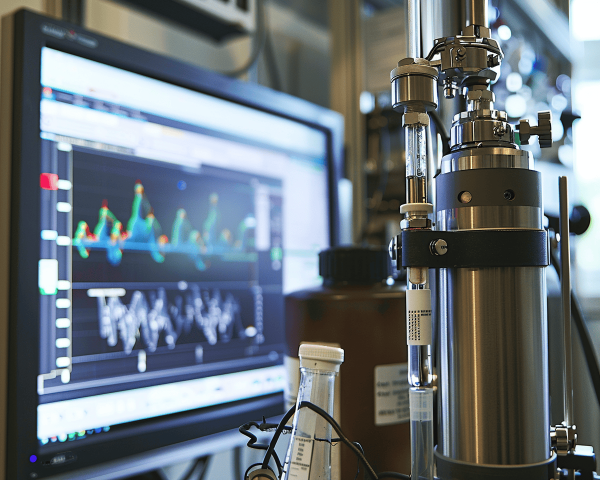Ever found yourself wondering why High-Performance Liquid Chromatography (HPLC) uses packed columns, while Gas Chromatography (GC) relies on open columns? You’re not alone. This difference is fundamental to the way each technique operates and is crucial for achieving the desired results in various types of analysis. Let’s break down the reasons behind these choices and how they impact the efficiency and effectiveness of each method.
Understanding the Basics
Before we dive into the specifics, let’s briefly revisit what HPLC and GC are and how they work.
High-Performance Liquid Chromatography (HPLC)
HPLC is a technique used to separate, identify, and quantify components in a liquid sample. It relies on a liquid mobile phase to carry the sample through a column packed with solid particles. The interaction between the sample components and the stationary phase (the packed column) allows for their separation.
Gas Chromatography (GC)
GC, on the other hand, is used to separate and analyze compounds that can be vaporized without decomposition. It uses a gaseous mobile phase to carry the sample through a long, coiled column that is often open (capillary) and coated with a liquid or solid stationary phase.

Why HPLC Uses Packed Columns
Efficient Separation
In HPLC, the use of packed columns is critical for efficient separation. The packed particles provide a large surface area for interactions between the stationary phase and the sample components. This high surface area increases the number of theoretical plates (a measure of column efficiency), leading to better separation of the compounds in the sample.
High Pressure Requirements
HPLC operates under high pressure to push the liquid mobile phase through the densely packed column. This high pressure is necessary to achieve the desired flow rate and separation efficiency. The packed columns are designed to withstand these high pressures, ensuring consistent performance and reliability.
Versatility in Applications
Packed columns in HPLC are highly versatile and can be customized with different types of stationary phases to suit various analytical needs. Whether you’re analyzing pharmaceuticals, environmental samples, or biochemical compounds, there’s a packed column designed to optimize the separation for your specific application.
Why GC Uses Open Columns
Efficient Gas Flow
GC columns are typically open, also known as capillary columns, to facilitate the efficient flow of the gaseous mobile phase. The open structure minimizes resistance to gas flow, allowing the carrier gas to move the sample through the column at an optimal rate. This is crucial for maintaining the efficiency and speed of the separation process.
High Resolution
Open columns in GC provide high-resolution separation due to their long length and narrow diameter. The thin layer of stationary phase coating the inside of the column allows for efficient interactions with the sample components, resulting in sharp and well-resolved peaks. This is particularly important for complex mixtures where high resolution is needed to separate closely related compounds.
Lower Pressure Requirements
Unlike HPLC, GC operates at much lower pressures. The open structure of capillary columns means there’s less resistance to the flow of the carrier gas, so high pressures are not necessary. This makes GC systems simpler and less expensive to operate and maintain compared to HPLC systems.
Comparing HPLC and GC Columns
Column Structure
- HPLC Columns: Packed with solid particles, providing a large surface area for interactions. Typically shorter and wider than GC columns.
- GC Columns: Open (capillary) with a thin layer of stationary phase coating the interior. Longer and narrower to maximize separation efficiency.
Pressure and Flow
- HPLC: Requires high pressure to push the liquid mobile phase through the packed column.
- GC: Operates at lower pressure, relying on the carrier gas to flow through the open column efficiently.
Applications
- HPLC: Ideal for analyzing non-volatile, thermally labile, or high molecular weight compounds in liquid samples.
- GC: Best suited for volatile, thermally stable compounds that can be vaporized without decomposition.


Practical Considerations
Choosing the Right Technique
When deciding whether to use HPLC or GC, consider the nature of your sample and the specific requirements of your analysis. HPLC is preferred for complex, non-volatile samples, while GC is ideal for volatile and thermally stable compounds.
Cost and Maintenance
HPLC systems tend to be more expensive and require more maintenance due to the high pressures involved. GC systems are generally more cost-effective and easier to maintain, making them a popular choice for routine analysis.
Conclusion
Understanding why HPLC uses packed columns and GC uses open columns helps clarify the strengths and limitations of each technique. Packed columns in HPLC provide efficient separation for liquid samples under high pressure, while open columns in GC facilitate efficient gas flow and high-resolution separation for volatile compounds.
By choosing the right method and column type for your specific analytical needs, you can achieve optimal results and enhance the efficiency of your lab work.
Sources:
- Chromatography Online: Basics of HPLC
- Science Direct: Advances in Gas Chromatography
- American Laboratory: Differences Between HPLC and GC











